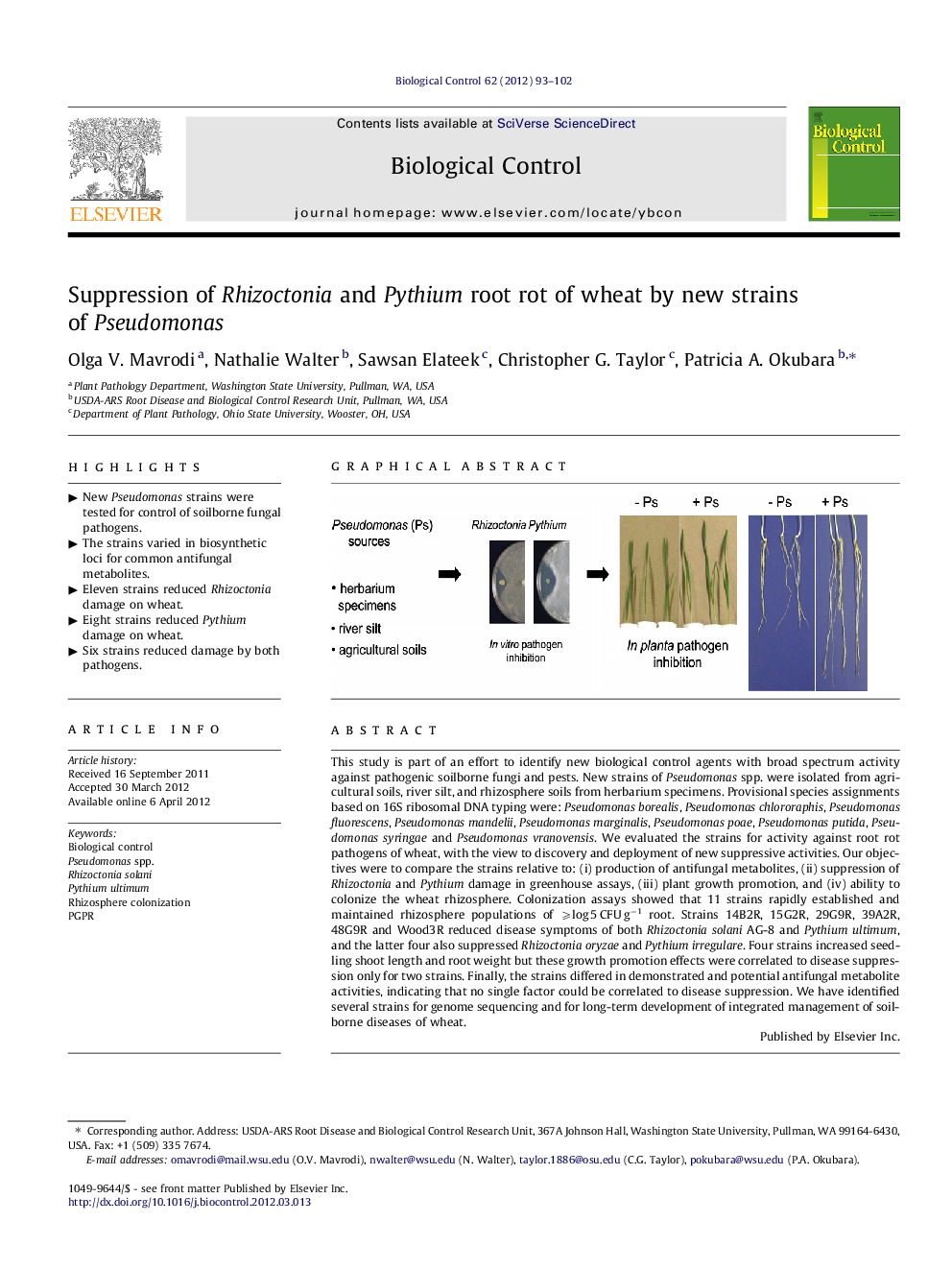| کد مقاله | کد نشریه | سال انتشار | مقاله انگلیسی | نسخه تمام متن |
|---|---|---|---|---|
| 4504103 | 1321064 | 2012 | 10 صفحه PDF | دانلود رایگان |

This study is part of an effort to identify new biological control agents with broad spectrum activity against pathogenic soilborne fungi and pests. New strains of Pseudomonas spp. were isolated from agricultural soils, river silt, and rhizosphere soils from herbarium specimens. Provisional species assignments based on 16S ribosomal DNA typing were: Pseudomonas borealis, Pseudomonas chlororaphis, Pseudomonas fluorescens, Pseudomonas mandelii, Pseudomonas marginalis, Pseudomonas poae, Pseudomonas putida, Pseudomonas syringae and Pseudomonas vranovensis. We evaluated the strains for activity against root rot pathogens of wheat, with the view to discovery and deployment of new suppressive activities. Our objectives were to compare the strains relative to: (i) production of antifungal metabolites, (ii) suppression of Rhizoctonia and Pythium damage in greenhouse assays, (iii) plant growth promotion, and (iv) ability to colonize the wheat rhizosphere. Colonization assays showed that 11 strains rapidly established and maintained rhizosphere populations of ⩾log 5 CFU g−1 root. Strains 14B2R, 15G2R, 29G9R, 39A2R, 48G9R and Wood3R reduced disease symptoms of both Rhizoctonia solani AG-8 and Pythium ultimum, and the latter four also suppressed Rhizoctonia oryzae and Pythium irregulare. Four strains increased seedling shoot length and root weight but these growth promotion effects were correlated to disease suppression only for two strains. Finally, the strains differed in demonstrated and potential antifungal metabolite activities, indicating that no single factor could be correlated to disease suppression. We have identified several strains for genome sequencing and for long-term development of integrated management of soilborne diseases of wheat.
Figure optionsDownload as PowerPoint slideHighlights
► New Pseudomonas strains were tested for control of soilborne fungal pathogens.
► The strains varied in biosynthetic loci for common antifungal metabolites.
► Eleven strains reduced Rhizoctonia damage on wheat.
► Eight strains reduced Pythium damage on wheat.
► Six strains reduced damage by both pathogens.
Journal: Biological Control - Volume 62, Issue 2, August 2012, Pages 93–102